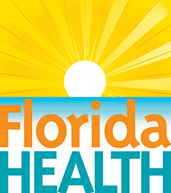It's a New Day in Public Health.
The Florida Department of Health works to protect, promote, and improve the health of all people in Florida through integrated state, county, and community efforts.
Rip Currents: Staying Safe in Florida’s Waters
Contact: Florida Health
- 850-245-4444
- health@flhealth.gov
-
Mailing Address
Florida Health
4052 Bald Cypress Way
Tallahassee, FL 32399
Florida Beach Safety: Rip Current Insights
 Rip currents are a significant coastal hazard along Florida’s extensive shoreline, posing risks to swimmers and other beach users. Understanding how these strong, narrow channels of water form and recognizing the visual cues that indicate their presence is essential for effective safety planning and emergency response. This overview explains the natural processes behind rip currents, highlights common indicators such as discolored water, calm patches, and rapidly moving debris, and outlines the potential dangers associated with these powerful ocean phenomena.
Rip currents are a significant coastal hazard along Florida’s extensive shoreline, posing risks to swimmers and other beach users. Understanding how these strong, narrow channels of water form and recognizing the visual cues that indicate their presence is essential for effective safety planning and emergency response. This overview explains the natural processes behind rip currents, highlights common indicators such as discolored water, calm patches, and rapidly moving debris, and outlines the potential dangers associated with these powerful ocean phenomena.
The guidance presented below is based on established research and best practices in coastal management.
- What Are Rip Currents?
- How to Identify a Rip Current
- The Hazards of Rip Currents
- Staying Safe Around Rip Currents
- Additional Resources
Rip currents are powerful, narrow channels of water that flow from the shore out to deeper waters. They form naturally when variations in wave energy create a concentrated path for water to return to the ocean. Although a normal part of coastal dynamics, these currents can be dangerous if you’re not prepared.
Key Facts:- Natural Phenomenon: Rip currents occur naturally along our coastlines.
- Formation: They form when waves break more strongly in some areas than others, forcing water to funnel back into the ocean.
 Recognizing rip currents before you enter the water is essential. Look out for these visual clues:
Recognizing rip currents before you enter the water is essential. Look out for these visual clues:
- Choppy, Discolored Water: Rip currents can make the water appear murky or different in color compared to surrounding areas.
- Calm Zones Between Waves: A deceptively quiet patch amidst choppy waves may indicate a rip current.
- Moving Debris: Watch for seaweed, foam, or other debris moving quickly away from the shore this often signals a rip current in action.
By familiarizing yourself with these signs, you can better assess beach conditions and steer clear of dangerous spots.
Rip currents can pose serious risks to even experienced swimmers:
- Overpowering Force: These strong currents can quickly pull swimmers away from shore, making it difficult to return safely.
- Panic and Exhaustion: The sudden pull of a rip current may trigger panic, causing swimmers to expend energy fighting the current, which can lead to exhaustion.
- Increased Drowning Risk: In extreme cases, if you panic or overexert yourself, the situation can escalate, increasing the risk of drowning.
 Safety is all about preparation and knowing what to do. Follow these tips to protect yourself:
Safety is all about preparation and knowing what to do. Follow these tips to protect yourself:
- Swim Where Lifeguards Are Present: Always choose swimming areas with active lifeguard supervision.
- Don’t Fight the Current: If caught in a rip current, resist the urge to swim directly back to shore. Instead, swim parallel to the shoreline until you’re out of the current.
- Float and Signal: If swimming becomes too challenging, float on your back and signal for help by waving your arms.
- Stay Informed: Check local advisories and weather reports before heading to the beach. Lifeguards and local authorities provide up-to-date warnings and conditions.
For further information and real-time updates on rip currents, consider these trusted resources:
- NOAA – Rip Currents: Offers comprehensive details on how rip currents form and safety recommendations.
- National Weather Service – Rip Current Safety: Provides guidelines and tips for recognizing and dealing with rip currents.
- Florida Division of Emergency Management: Visit your county or city’s emergency management website for the latest local alerts and guidelines.
- American Red Cross – Rip Current Safety: Provides additional tips and safety measures to help protect beachgoers.
Key Takeaways: Florida Coastal Safety
Ensuring safety along Florida’s coastline requires a proactive and informed approach. The guidelines and insights provided on this page are designed to empower beach users to identify rip current hazards and respond effectively. By following these safety protocols, heeding local advisories, and observing lifeguard instructions, you contribute to a safer coastal environment for everyone. Continuous vigilance and adherence to best practices are key to mitigating the risks posed by rip currents. We encourage you to integrate this information into your beach planning and share it with others, so that together, we can enhance safety and enjoyment along Florida’s beaches.
Disclaimer: The links and content provided on this page are for informational purposes and your convenience. The Florida Department of Health (DOH) does not endorse, approve, or guarantee the products, services, or opinions offered on external websites. Furthermore, the DOH is not responsible for the accuracy, content, or availability of these external sites. For questions or concerns, please contact the external site directly.



Connect with DOH